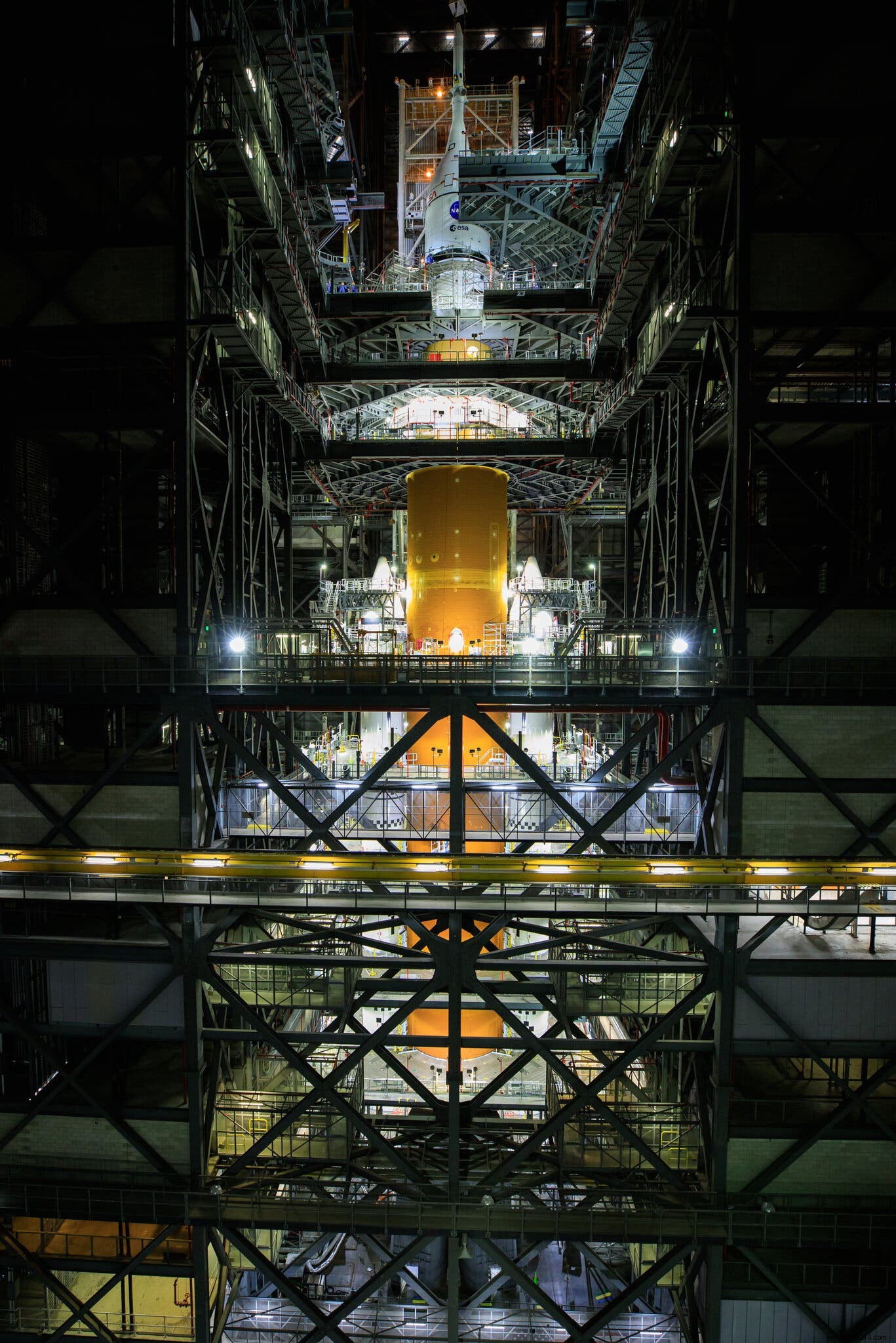Supposed to launch the first Artemis mission in November, NASA's Space-Launch System (SLS) launcher will finally take off next February. The objective of this mission will be to send an unmanned Orion capsule around the Moon.
The SLS, NASA's new super-heavy launcher, is the one that will send the next crews to the Moon. Its first flight was normally scheduled for next November as part of the Artemis I mission, whose objective will be to send an unmanned Orion capsule around the Moon. Eventually, development delays forced NASA to shift that deadline. According to the American agency, the SLS should be able to take off in mid-February.
Specifically, a two-week launch window will be open starting February 12 , we learned during the press conference held this Friday, October 23. The continuation of this schedule will depend in particular on the dress rehearsal for the launch next January. In case of postponement, two other launch windows (based on the alignment of the Moon with the Earth) will be proposed in March and April .
This oft-delayed flight called Artemis-1 will aim to test the safety of the Orion vehicle. A future flight, Artemis-2, will carry a crew for a similar journey that will echo the Apollo 8 mission in 1968. NASA hopes to bring astronauts back to the lunar surface within the decade (not before 2025). This will be a first since the Apollo 17 mission in 1972.
Recall that NASA has so far spent ten billion dollars on the rocket, plus another sixteen billion dollars for the Orion capsule. Eventually, each launch of the SLS will cost around two billion dollars.
In the meantime, teams from NASA's Kennedy Space Center in Florida installed the Orion spacecraft atop the lunar rocket on October 21, 2021, completing the mission. assembly of the 98 meter high launcher for the flight test of Artemis I.

If this schedule is met, 2022 could be one of the busiest years the Moon has ever seen . In addition to Artemis 1, NASA plans to send a small satellite into orbit around the Moon and a pair of landers carrying a variety of private cargo. China, Russia, India and South Korea have also all announced plans for lunar orbits or landings in 2022.